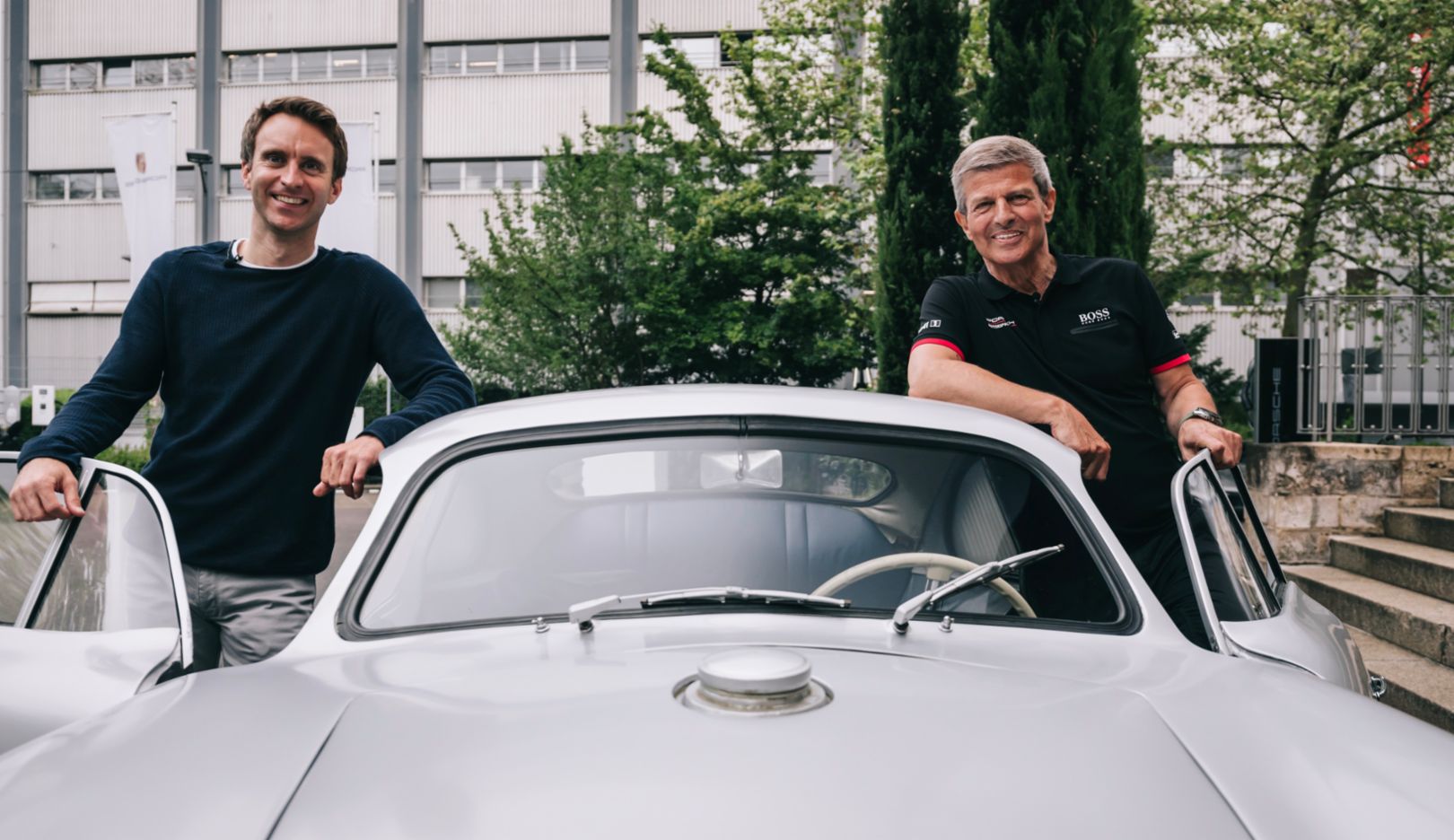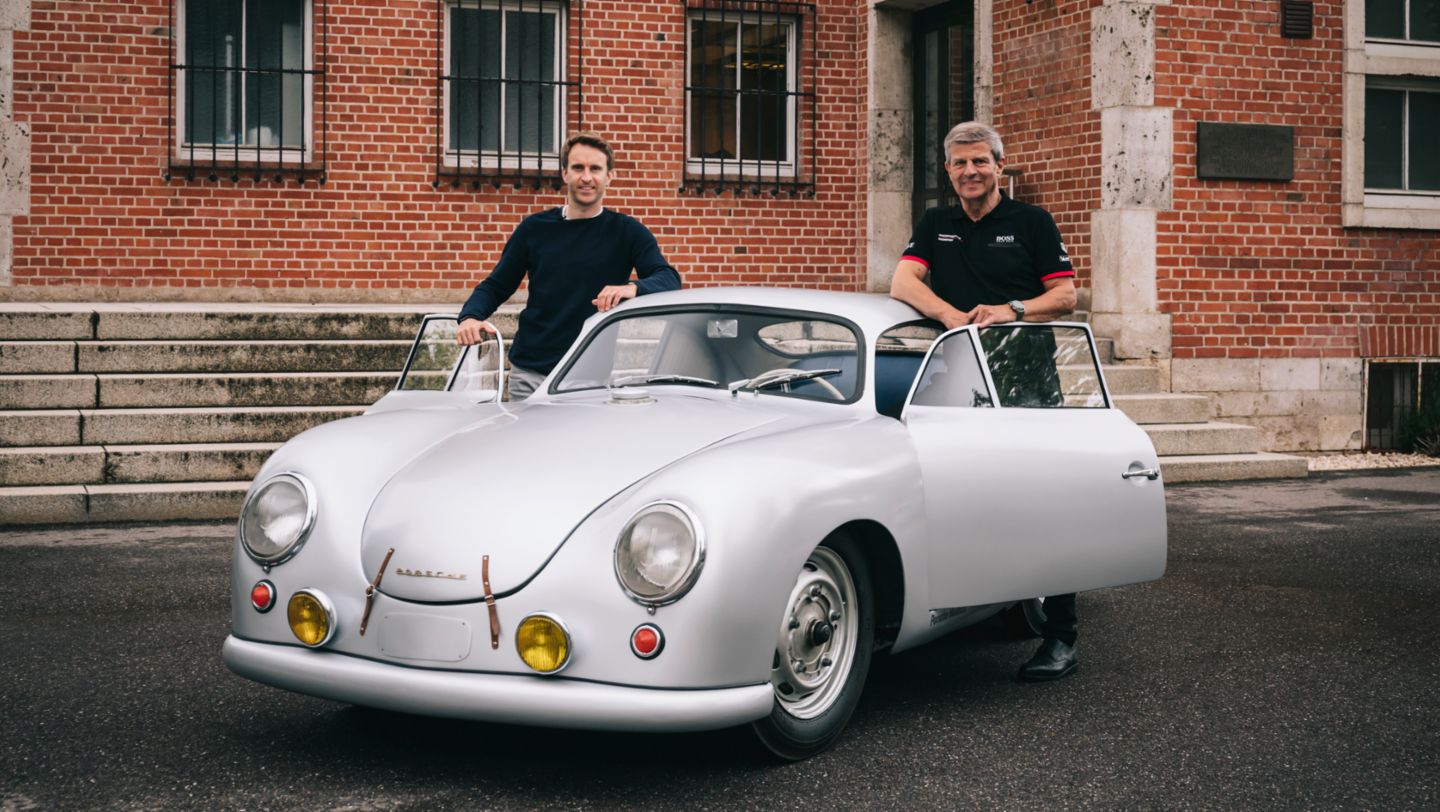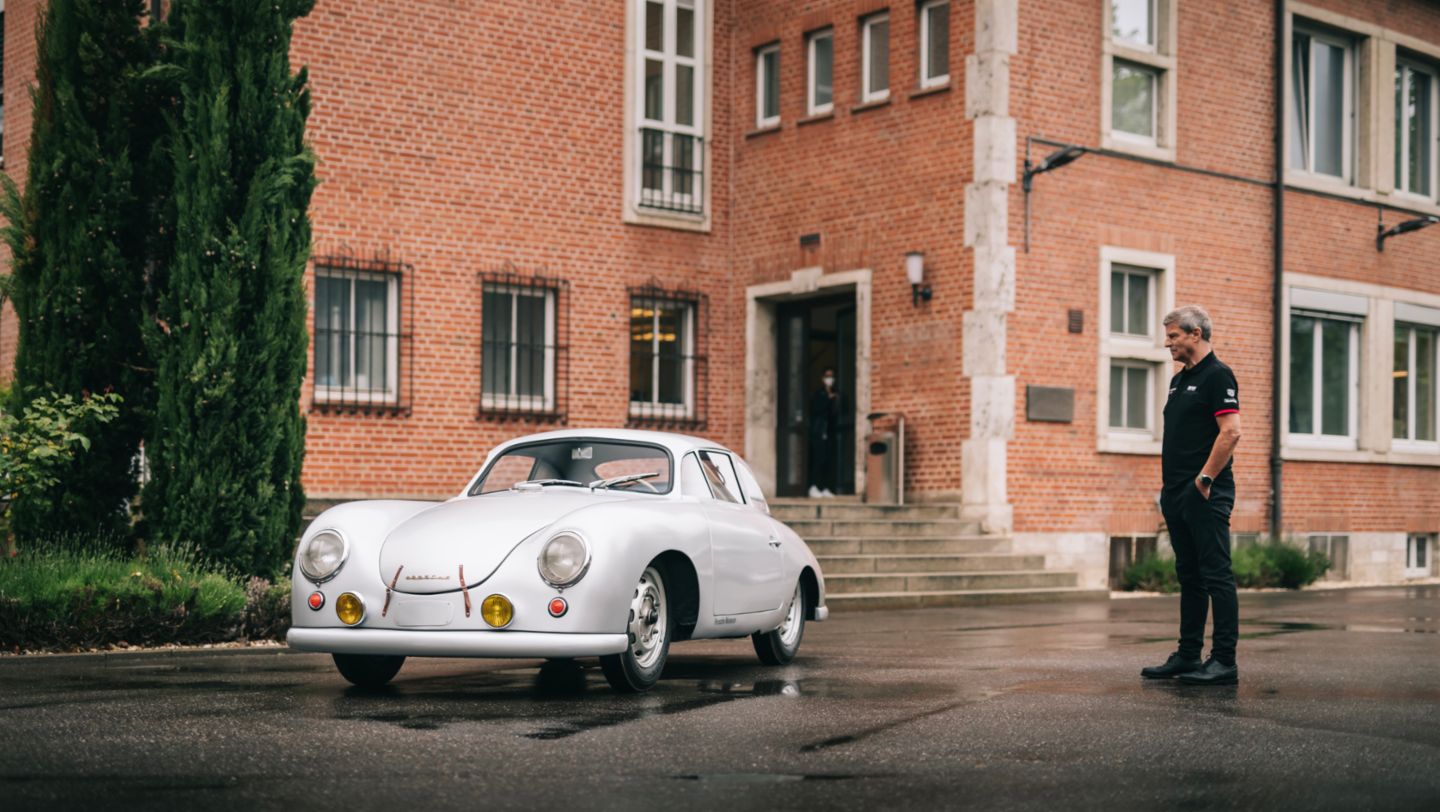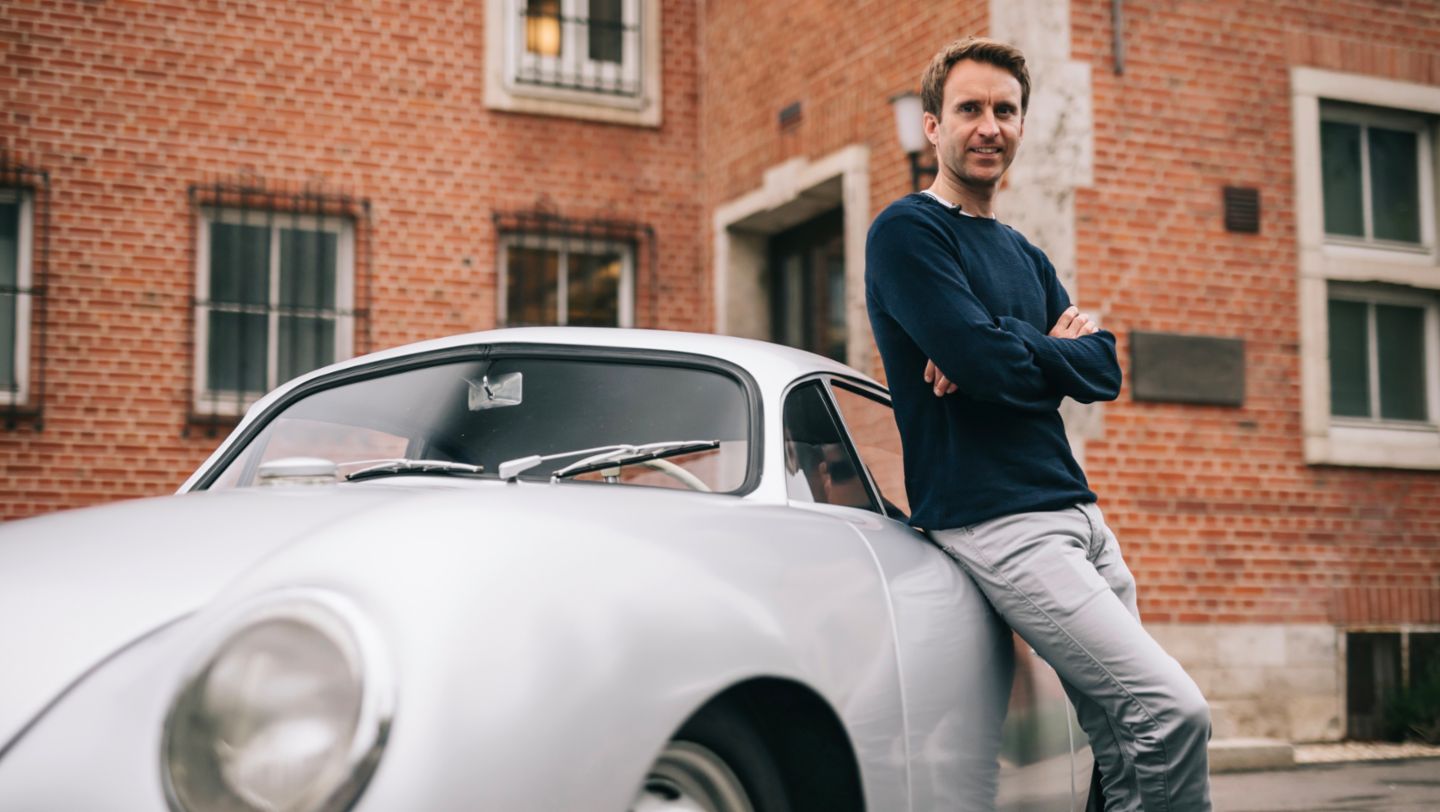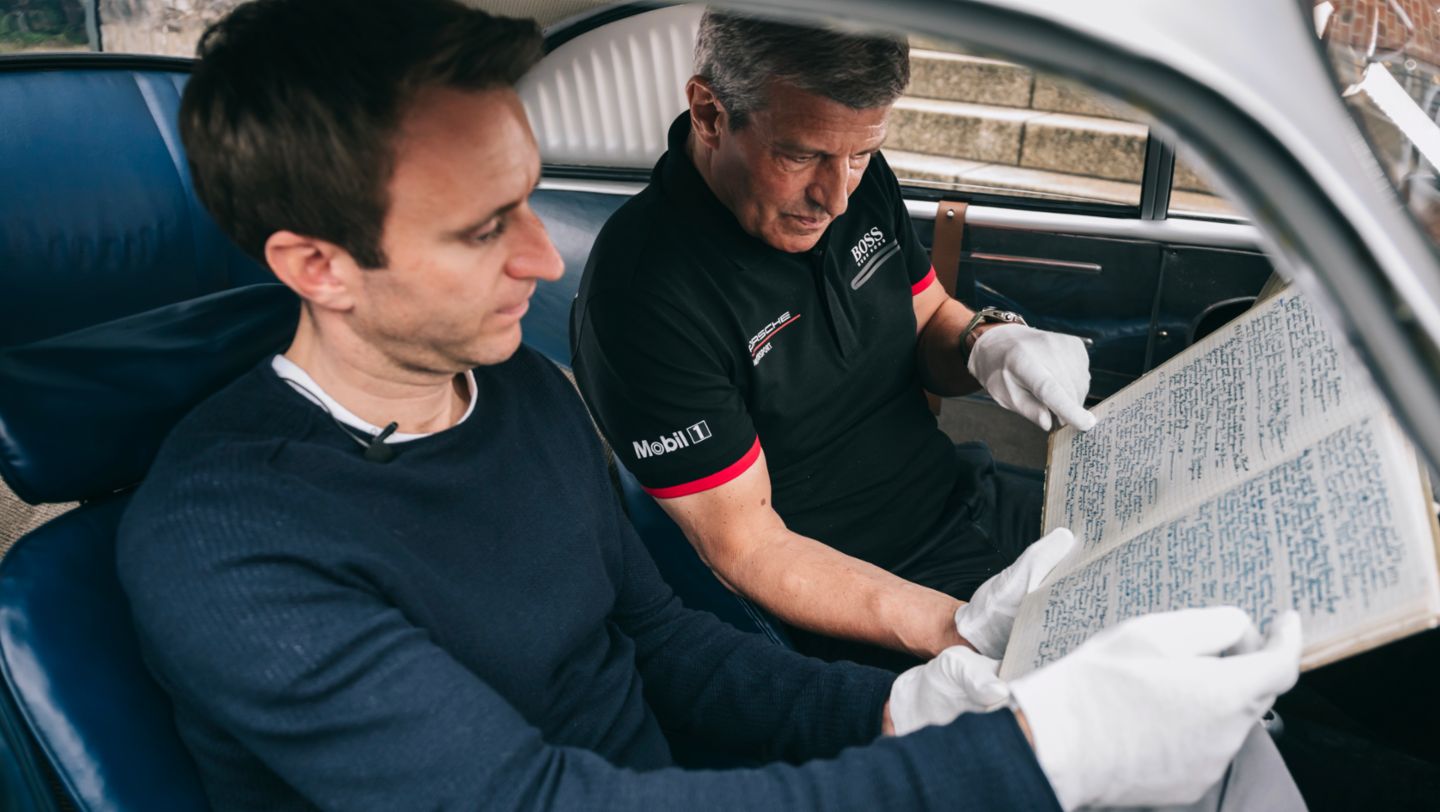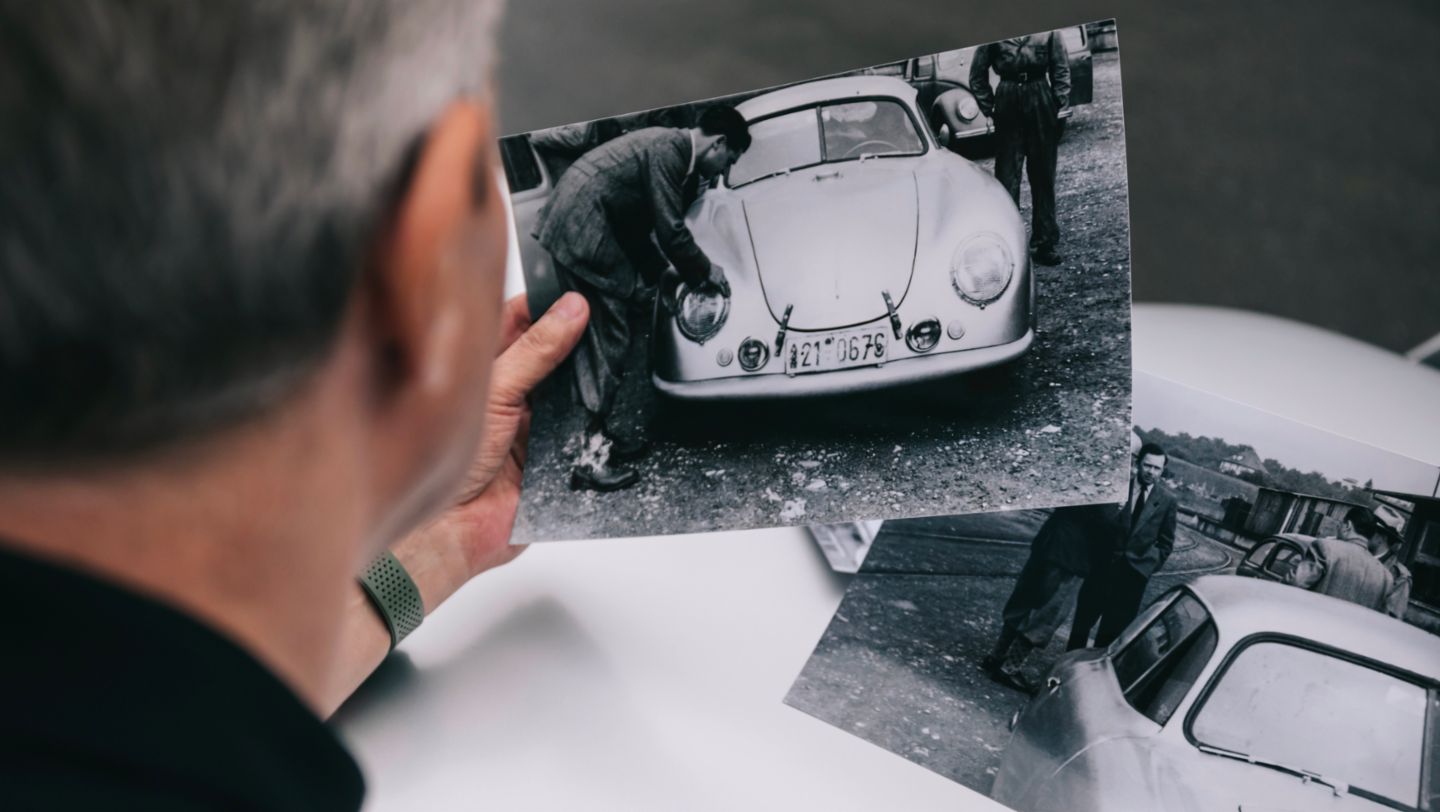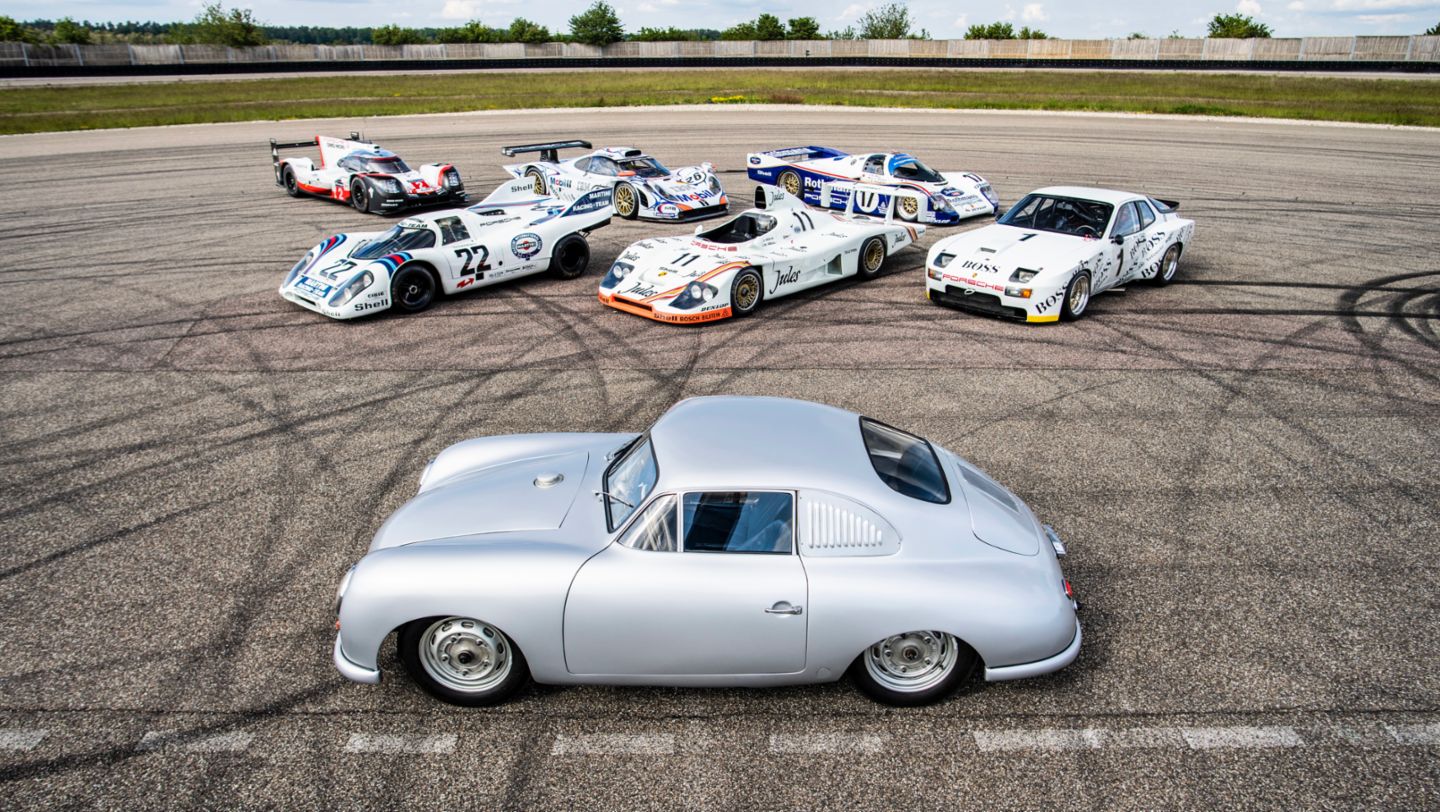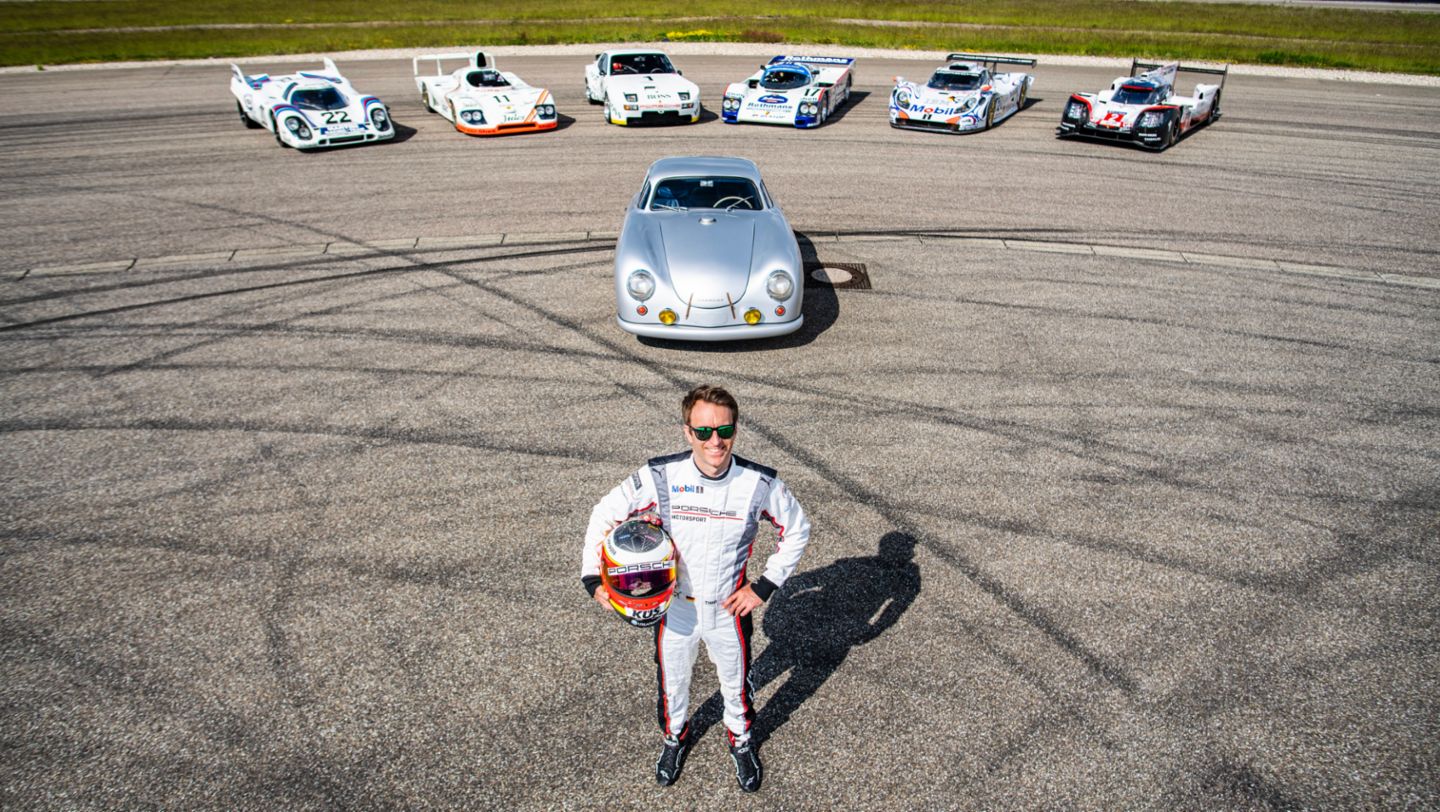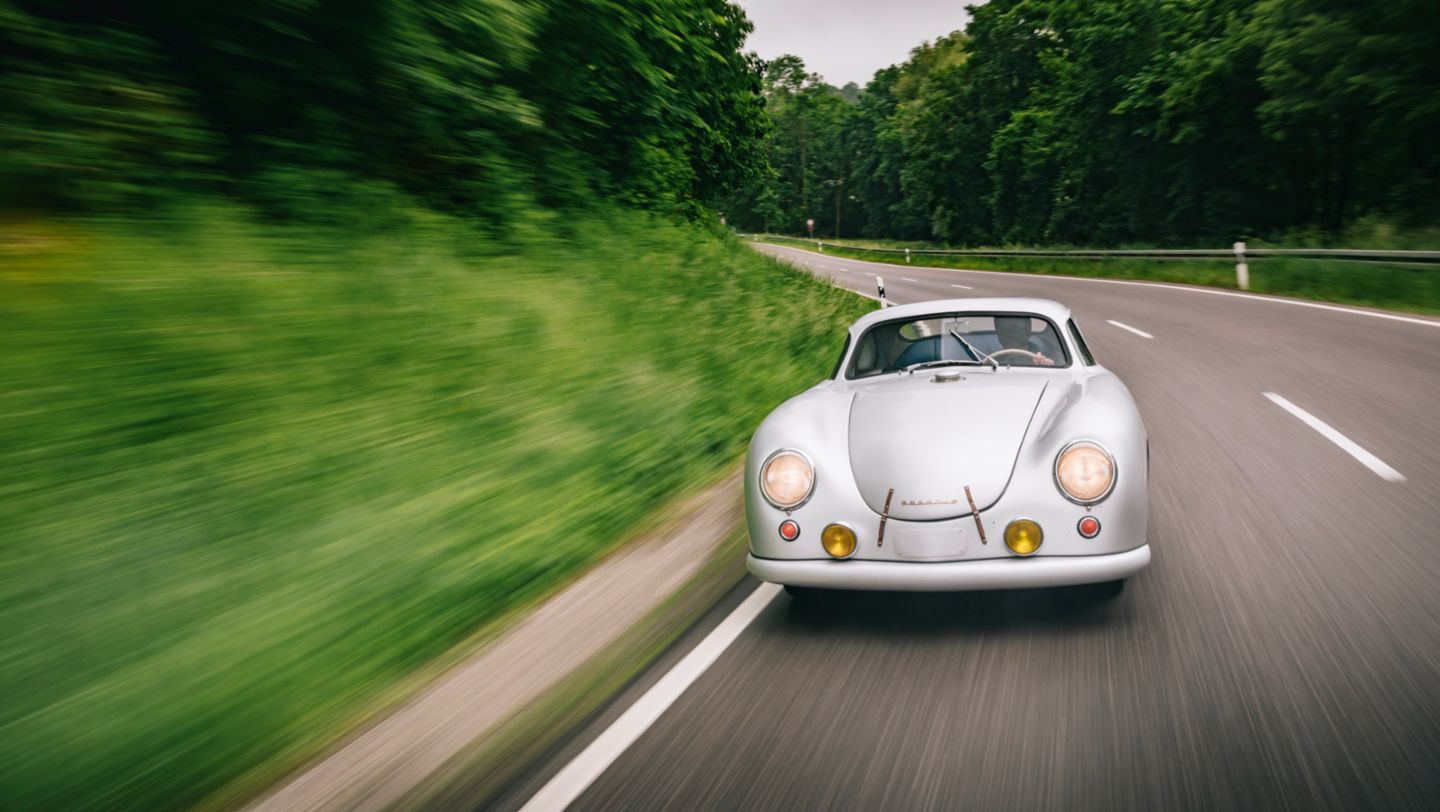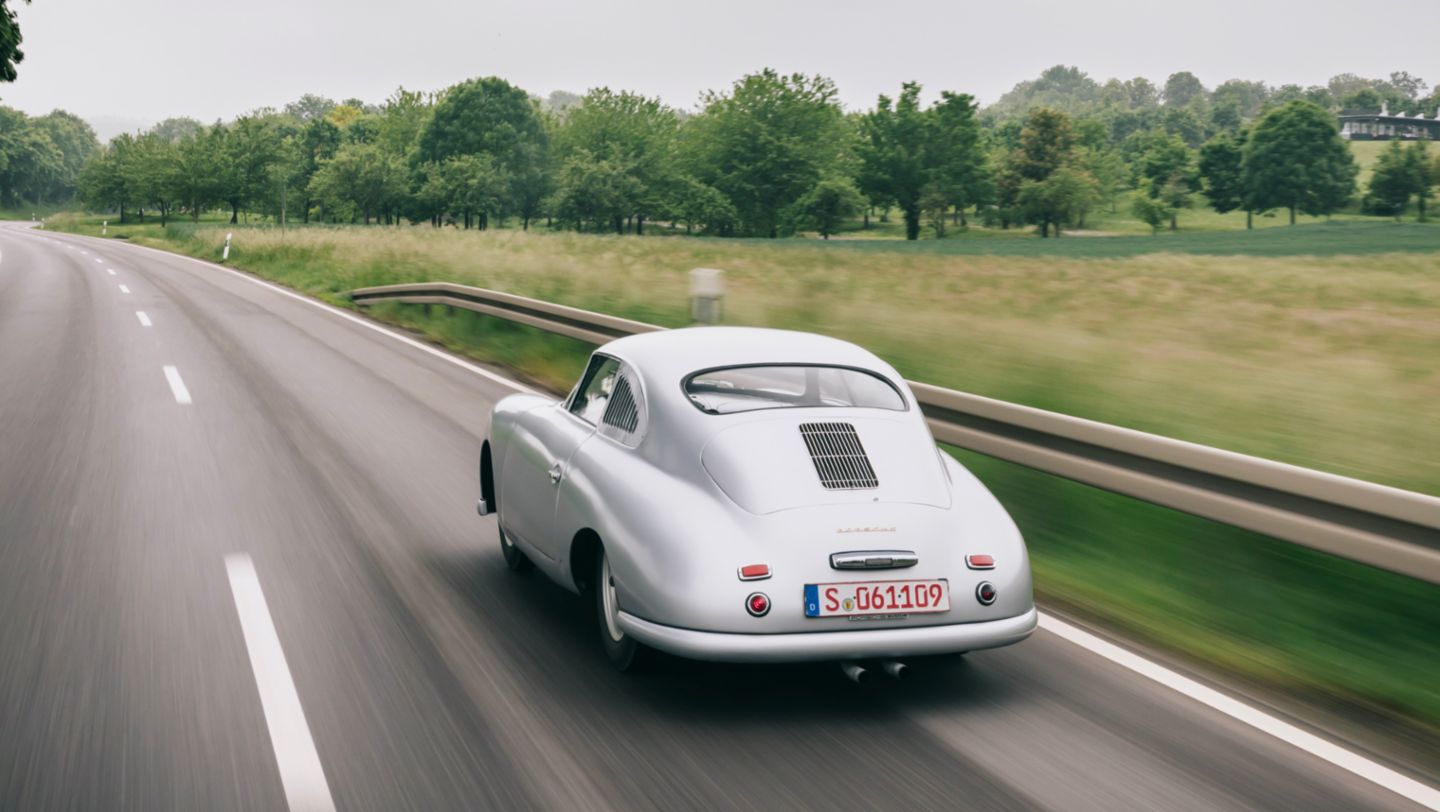The starting point is 1951, the year in which Porsche first took to a class victory with the 356 SL. A further 107 class and 19 overall victories followed on from this triumph with the light alloy coupé. Seventy years later, Porsche is launching Porsche Moments, a new series that devotes six episodes to this famous chapter in Porsche’s motorsport history.
The team pays tribute to the many historically significant moments at Le Mans through this content, internationally and at the headquarters in Zuffenhausen. “In the new Porsche Moments format, we will be highlighting special moments from our past during which we – from today’s point of view – have made corporate, product or racing history. We reconstruct these moments as authentically as possible by means of contemporary witnesses and invite our fans to again experience these special Porsche Moments via our social media channels,” says Achim Stejskal, Head of Porsche Heritage and Museum. Le Mans winner and endurance champion Timo Bernhard takes fans through the episodes in the role of host. He meets up with interesting contemporary witnesses on both four wheels and two legs, and in both Zuffenhausen and Weissach.
For the first episode of Porsche Moments, Timo Bernhard is joined by someone he hadn’t seen for two years: Fritz Enzinger, Vice President Motorsport at Porsche. Enzinger led the brand to three overall victories at Le Mans. Their reunion in front of the historical brick building of Werk 1 is like a meeting of old friends – it’s as if the two had brought the legend of Le Mans to Zuffenhausen. “Trust and friendship are important for success in racing,” says Enzinger, as he climbs out of the 356 SL. SL stands for Super Light: thanks to its aluminium body, the Coupé weighs only 1,500 pounds – almost 265 pounds less than the steel-bodied 356 Coupés produced by Reutter in Stuttgart from November 1949. “Wilhelm Hild from the Porsche works team gave the 356 SL the nickname ‘aluminium can’," Enzinger reveals with a smile. In-house, the car is known as the ‘Type 514 Porsche Sport for Le Mans 1951’.
From 1948, Porsche built 44 Type 356/2 Coupés in Gmünd, in Austria’s Carinthia region. Eleven other body shells went to Stuttgart and some were later further developed there. The car featured in the first episode of Porsche Moments is the historical godfather of the class winner and was made in 1952 – one year later than the original No. 46 winning car. “Just imagine – a car with less than 49 HP driving 1,765.1 miles (2,840.65 kilometers) at Le Mans at an average speed of 73.54 mph (118.36 kmh). And that’s in 1951! It had travelled to the race by road – and then drove back to Zuffenhausen on country roads,” says Enzinger. The winning car was driven by French importer Auguste Veuillet and his compatriot Edmond Mouche: two drivers for a 24-hour race was not unusual at the time.
The meeting of Bernhard and Enzinger in front of Werk 1 is symbolic for the journey of the Porsche from Zuffenhausen to the first class victory at Le Mans. Originally, the team had started in the Reutter building. “These days it is inconceivable to drive competition cars by road to Le Mans,” says Bernhard about the risky 11-hour trip on June 16, 1951. “Departure was at 7:15 in the morning; Ferry Porsche sent off the team,” says Enzinger as he shares historical photos and entries about this moment in the journal of then chief designer, Karl Rabe. Racing driver Veuillet and Charles Faroux, race director of the 24 Hours of Le Mans, had managed to convince Ferdinand and Ferry Porsche to participate at Le Mans when they met at the Paris Motor Show the year before.
“Le Mans is simply a magical place”
The path to the first class victory on June 24, 1951 proved to be long – two out of three competition and test cars had already been in accidents by the time the race started. All hopes were pinned on the remaining lightweight and the 45 HP increased-displacement, four-cylinder boxer engine. “If you win at Le Mans with a Porsche, it reverberates throughout the whole company,” remembers Enzinger. “It must have been the same then with the first class victory. Le Mans is simply a magical place”.
Enzinger’s best Porsche Moment in France was the win in 2015: “We dominated from the first free practice – an indescribable feeling. The suspense peaked at the finish line.” Timo Bernhard’s personal Porsche Moment is the overall victory in 2017. “Winning three years in succession is only possible with the best team. We came from 21 nations – and we all had the same goal”. Talking about “the same”, Fritz Enzinger has always had the same hotel room from 2014 – no. 424 – a tradition that calms the nerves. Another tradition for Porsche is the transfer of technology from motorsport to production. This is still the case today and has never been any different. “Race tracks are development laboratories for the brand’s technologies. At Porsche, innovative solutions must be proven under the most arduous of conditions. Only then can they be put into road vehicles,” says Bernhard. “By the time the car returned home, when the engine of the 356 SL had been run in, the Porsche had some 4 HP more, according to anecdotes,” says the 40-year-old.
To honour the Porsche success story at Le Mans worldwide, the sports car manufacturer will also be holding a roadshow from June 2021 to January 2022 in addition to Porsche Moments. The plan is to make 14 stops in 10 countries, including France, the Netherlands, the UK, the US, China, the United Arab Emirates and Germany. Porsche enthusiasts can look forward to static and dynamic appearances of more than 20 original winning cars from the historic collection. In all Porsche Experience Centers globally, so-called Heritage Corners – in keeping with the roadshow – will be dedicated to exploring this history in greater depth. In addition, various classic car events are being planned, such as at the Monterey Car Week in California. Depending on the pandemic situation, the use of drivers from that time may be possible either live or virtually. They will give Porsche fans and motorsport enthusiasts their insights into exciting experiences.
The Porsche Museum will post the first Porsche Moment with Timo Bernhard and Fritz Enzinger on the @porsche.museum Instagram feed on Wednesday, June 16, 2021. Five further episodes will then follow every week, as the Porsche Moments format will continue in Weissach. There, Timo Bernhard will meet protagonists and contemporary witnesses such as Norbert Singer, Walter Röhrl and Hans-Joachim ‘Strietzel’ Stuck. The following models will also be on show: 917 KH (1971), 936/81 and 924 GTP (1981), 962 (1987), 911 GT1 (1998) as well as the 919 Hybrid (2017). Many exciting anecdotes that make the legend of Porsche at Le Mans tangible and explain the historical significance of each win await. The roadshow will be extensively showcased on the company’s social media channels, which will make it possible to gain some special insights.
Interested fans can also follow “The Porsche success story at Le Mans” from behind the glass partition that provides a view of the workshop in the Porsche Museum. The roadshow makes a stop there and six Le Mans class and overall winners will be on show.
